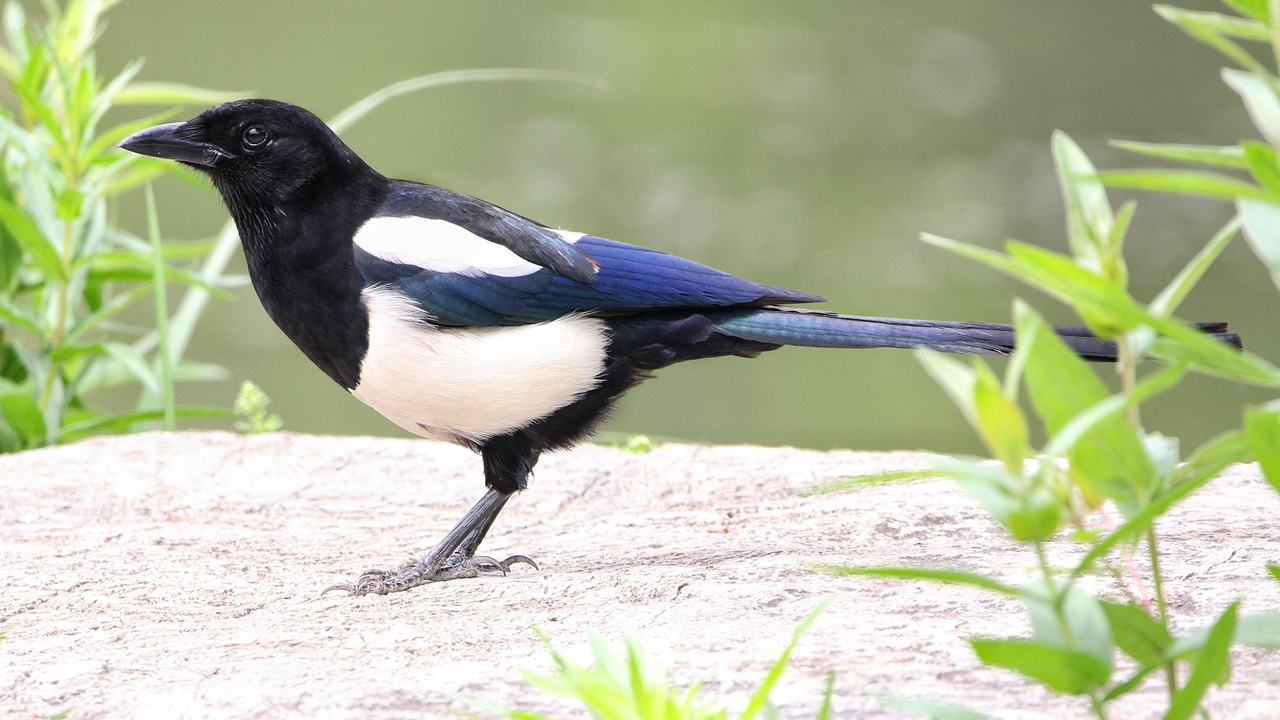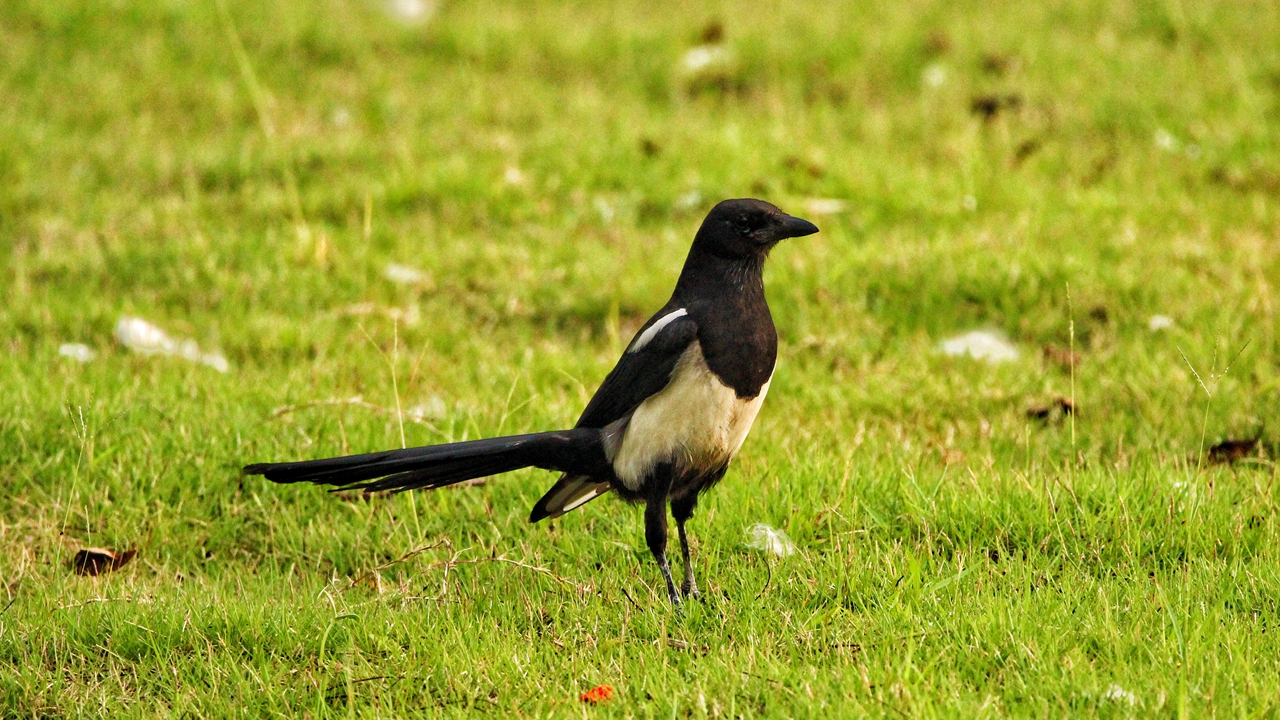The Eurasian magpie
Writer: Isaac Cohen | Editor: Zhang Chanwen | From: Original

A Eurasian magpie is seen at Donghu Park in Luohu District. Photos by Isaac Cohen
The Eurasian magpie
The Eurasian magpie (Pica pica), found in Shenzhen’s diverse ecosystems, has a striking black and white plumage and a long, graceful tail. Measuring up to 60 centimeters long, this medium-sized bird boasts a distinctive black plumage over its head, upper chest, back, and tail in stark contrast to bright white feathers on its lower body and the base of the wings. Iridescent hues shine through its feathers in shades of blue and green.
喜鹊是一种深圳本地生态系统中的常见鸟类,覆羽黑白相间,尾部纤长优雅。体型中等,体长可达 60 厘米,头胸、背部及尾部黑色覆羽与下半身及翅基部的亮白色覆羽形成鲜明对比。喜鹊的黑是“五彩斑斓的黑”,具备结构色特点的羽毛往往随着光线的变化而呈现或蓝或绿的光辉。
The highly adaptable species can be found in many habitats throughout Shenzhen, thriving in urban and rural areas, including parks, gardens, and wetlands. This bird often builds its nests in tall trees, where it can establish territories and find suitable shelters for its young.
喜鹊适应性很强,见于深圳的多种生境,比如城市及农村聚落、公园和花园绿地、及湿地等。常占据高大的树木为领地,以搭建巢穴,繁衍后代。

A Eurasian magpie is seen at Donghu Park in Luohu District.
An omnivore with a diverse diet, the bird feeds on insects, worms, and other invertebrates, which it finds by probing the ground or searching through leaf litter. It also consumes fruits, seeds, grains, and even small vertebrates, such as frogs or mammals.
喜鹊是杂食动物,几乎什么都吃,常在地面活动,捕捉藏匿在落叶腐殖质中的昆虫、蠕虫等无脊椎动物,也吃水果、种子、谷物及青蛙,甚至青蛙及小型哺乳类等脊椎动物。
During the breeding season, which typically occurs in late winter or early spring, they build a large, domed nest made of twigs and lined with soft materials like grass or feathers. The female lays a clutch of up to eight eggs, which both parents incubating them for about three weeks.
喜鹊常在冬末春初繁殖,常使用树枝等材料筑起圆顶巢,巢硕大似篮球,内衬草或羽毛等软质材料。雌鸟每窝产卵可达8枚,由亲鸟轮流孵化约三周后,雏鸟破壳。
The Eurasian magpie plays an essential role in the local ecosystems. Its foraging behavior helps control the populations of insects and other invertebrates, contributing to ecological balance. They indirectly benefit agricultural areas and gardens by consuming pests, reducing the need for chemical pesticides. Also, their abandoned nests are often reused by other birds, a fact that helps to enhance the biodiversity and richness of Shenzhen’s avian community.
喜鹊在当地生态系统中扮演着重要角色:本物种的觅食行为有助于控制昆虫和其他无脊椎动物的数量,促进生态平衡。同时,它们对害虫的大量捕食也降低了化学杀虫剂的施用频率,从而间接地保护了农田和花园的环境。此外,喜鹊的弃巢也经常被其他鸟类重新利用,有助于提升深圳鸟类群落的多样性和丰富性。